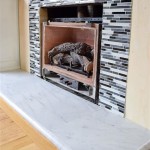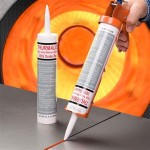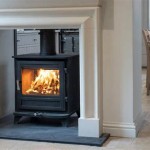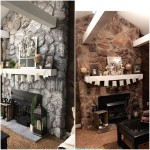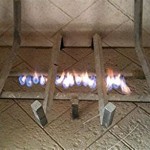Firewood for Indoor Fireplaces: A Comprehensive Guide
Selecting the right firewood for an indoor fireplace is crucial for efficient heating, safety, and overall enjoyment. The type of wood burned significantly impacts the amount of heat produced, the level of smoke emitted, and the potential for creosote buildup. This article provides a detailed guide to understanding firewood characteristics and choosing the optimal wood for indoor use.
Firewood is not simply any piece of wood that can be ignited. It is a fuel source with specific properties that affect its burning characteristics. Factors such as species, moisture content, density, and seasoning all play a role in determining how well firewood will perform in a fireplace. Understanding these properties allows homeowners to make informed decisions when sourcing and preparing their firewood.
The primary purpose of burning firewood in an indoor fireplace is to generate heat for comfort and warmth. However, burning the wrong type of wood or improperly seasoned wood can lead to inefficient heating, increased air pollution, and potential fire hazards. Therefore, careful consideration should be given to the selection and preparation of firewood for indoor use.
Understanding Firewood Characteristics
Several key characteristics define the quality and suitability of firewood for indoor use, influencing its burning behavior and overall efficiency. These include wood type (hardwood vs. softwood), moisture content, density, and size.
The distinction between hardwood and softwood is a fundamental consideration. Hardwoods, generally deciduous trees that lose their leaves annually, are denser and burn hotter and longer than softwoods, which are typically evergreen trees with needles. Examples of hardwoods include oak, maple, ash, birch, and beech. Common softwoods include pine, fir, spruce, and cedar.
Hardwoods are preferred for indoor fireplaces due to their higher energy content and longer burn times. They produce more heat per unit volume compared to softwoods, making them a more efficient heating source. Additionally, hardwoods tend to produce less smoke due to their lower resin content.
Softwoods, on the other hand, burn quickly and produce more smoke and creosote. While they may be suitable for kindling to start a fire, they are not recommended as the primary fuel source for an indoor fireplace. The higher resin content in softwoods causes them to spark and pop more frequently, increasing the risk of embers escaping the fireplace.
Moisture content is a critical factor affecting the burning efficiency and safety of firewood. Freshly cut wood contains a high percentage of moisture, typically ranging from 30% to 60%. Burning wood with high moisture content results in energy being consumed to evaporate the water, rather than producing heat. This leads to inefficient burning, increased smoke production, and the formation of creosote.
Seasoning refers to the process of drying firewood to reduce its moisture content. Properly seasoned firewood should have a moisture content of 20% or less. This is achieved by splitting the wood and stacking it in a well-ventilated area for a period of six months to a year, depending on the climate and wood species. Testing the moisture content using a wood moisture meter is the most accurate way to determine if the wood is adequately seasoned.
Density refers to the mass of wood per unit volume. Denser woods contain more energy per unit volume and burn longer. Hardwoods are generally denser than softwoods, which contributes to their superior heating performance. Within hardwoods, there are variations in density. For example, oak is denser than birch, and maple is denser than ash.
The size of firewood is also important for efficient burning. Large, unsplit logs can be difficult to ignite and may smolder rather than burn cleanly. Smaller, split pieces of wood ignite more easily and burn more completely. The ideal size of firewood for an indoor fireplace depends on the size of the firebox and the desired burn time. As a general guideline, pieces should be split to a size that allows for adequate airflow around the wood.
Selecting the Right Wood Species
Choosing the appropriate wood species contributes to a safe and efficient indoor fire. Different wood species have different burning characteristics, including heat output, smoke production, and creosote potential.
Oak is a highly regarded firewood choice due to its high density, long burn time, and substantial heat output. It is a popular choice for homeowners seeking a reliable and efficient heating source. However, oak requires a longer seasoning time compared to other hardwoods, typically 12 to 24 months. Red oak, in particular, can take longer to season than white oak.
Maple is another excellent hardwood choice, offering good heat output and relatively clean burning. It seasons more quickly than oak, typically requiring 6 to 12 months of drying time. Maple is also readily available in many regions, making it a practical choice for homeowners.
Ash is known for its easy splitting and rapid seasoning, typically taking 6 to 9 months to dry. It burns cleanly and produces good heat, making it a popular choice for indoor fireplaces. Ash also tends to ignite easily, making it a good option for starting fires.
Birch, while visually appealing, burns relatively quickly compared to oak and maple. It also produces more smoke. Birch is best suited for shorter fires or as a supplementary fuel source. Its attractive bark makes it a popular choice for decorative purposes as well.
Avoid using softwoods extensively in indoor fireplaces. While pine, fir, and spruce may be acceptable for kindling, their high resin content leads to excessive smoke, creosote buildup, and potential fire hazards. Using softwoods as a primary fuel source can also damage the fireplace and chimney over time.
Certain wood species should be avoided altogether due to their toxicity or unpleasant burning characteristics. These include treated wood, painted wood, plywood, particleboard, and any wood containing preservatives or chemicals. Burning these materials releases harmful fumes into the home and environment.
Safe Firewood Handling and Storage
Proper handling and storage of firewood are essential for safety and preserving the quality of the wood. Incorrect storage practices can lead to mold growth, insect infestations, and reduced heat output.
Firewood should be stacked off the ground to prevent moisture absorption and insect infestation. Using pallets, cinder blocks, or a designated firewood rack will provide adequate elevation and airflow. This prevents the wood from rotting and allows for optimal seasoning.
Stack firewood in a well-ventilated area to promote air circulation and facilitate drying. Avoid stacking wood directly against the side of a house or other structure, as this can trap moisture and create a breeding ground for insects. A sunny location is ideal for speeding up the seasoning process.
Cover the top of the firewood stack with a tarp or other waterproof material to protect it from rain and snow. However, leave the sides open to allow for continued air circulation. This prevents the wood from becoming waterlogged while still allowing it to dry.
Store firewood away from flammable materials, such as gasoline, propane, and dry leaves. Maintain a clear area around the firewood stack to prevent the spread of fire. A distance of at least 10 feet is recommended.
Inspect firewood regularly for signs of insects or decay. Remove any infested or rotten wood to prevent it from spreading to the rest of the stack. Insect-infested wood can attract pests into the home.
When transporting firewood, be aware of local regulations regarding the movement of wood across state or county lines. Certain areas have restrictions in place to prevent the spread of invasive insects and diseases.
Wear gloves and eye protection when handling firewood to protect against splinters and debris. Handle firewood carefully to avoid back injuries or other accidents. Using a wood splitter can significantly reduce the physical strain of splitting firewood.
By understanding the characteristics of different wood species, proper seasoning techniques, and safe handling practices, homeowners can ensure they are using the best firewood for their indoor fireplace, maximizing heat output, minimizing smoke and creosote buildup, and creating a safe and enjoyable fire.

Why You Should Never Your Firewood Indoors

10 Of The Best Indoor Firewood Storage Ideas Maria Louise Design

A Ling Fire Indoor Firewood Storage Ideas Home Tree Atlas Wood Burning Stoves Living Room Freestanding Fireplace Stove Hearth

Firewood Guide The Home Depot

Firewood Holder Metal Rack Indoor Outdoor Fireplace Industrial Style

The Best And Worst Types Of Wood For Burning In Fireplace Bob Vila

Frame Indoor Outdoor Log Holder Reviews Crate Barrel Home Fireplace Decor Fall

25 Cool Firewood Storage Designs For Modern Homes

How To Firewood Indoors The Fireplace Center

Fireplace Wood Log Rack Indoor Firewood Holder With Wheel China Outdoor Made In Com
Related Posts


